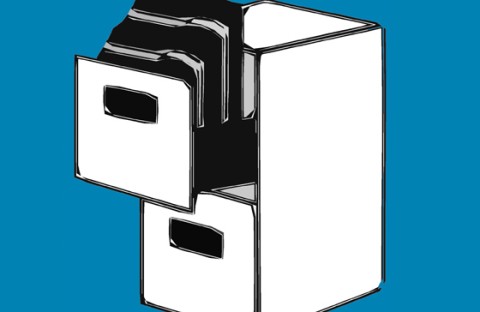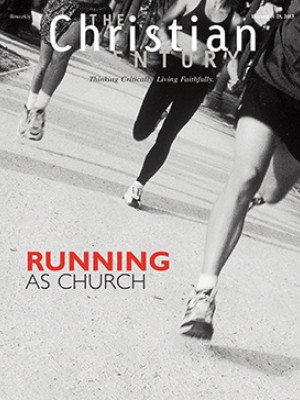Dress code: Case by case

Congregational life presents a broad range of conflicts and dilemmas in which theological and ecclesial issues are entwined with the complex drama of human relations. Such challenges are also moments in which Christian witness can be clarified. This fictional narrative, which is followed by an analysis, is the sixth in a series.
Bill Strong had been a Christian all his life, or at least it felt that way. He’d been brought up in the church, become a member when he was 12, and attended almost every Sunday with his wife and children.
Bill knew he would attend even if he didn’t have children to bring. He took his church’s Bible class seriously. Furthermore, he tried to be ethical in his business. But he had to admit that some Sundays it felt a little like going to a Rotary Club meeting, because he encountered clients and potential clients for his architecture business. One Sunday, he’d even set up an appointment to see an office that a member of his Sunday school class wanted to renovate. He got the contract, and the job went well.
Read our latest issue or browse back issues.
Still, he found he was a little envious of Evan, an architect with whom he had worked for six years. Seven months earlier, Evan had made a new religious commitment that intrigued Bill and made him think more deeply about his own Christian faith.
Evan’s conversion was prompted by his marriage to Rebekah, a Jewish woman who felt it was important for him to convert. Evan’s birth family hadn’t gone to church, and he had little interest in religious matters, so at first he regarded the classes he took with the rabbi as pro forma. Along the way, however, he discovered a deep appreciation for the beliefs and practices of Judaism and his conversion was truly that—a transformation in the way he viewed the holy and other people and himself. Although he was not required to wear a kippah, or yarmulke, Evan decided to do so not just on religious occasions but as part of his daily life. He started wearing one to work each day.
At Evan’s wedding, Bill and the other non-Jewish men were invited to take a yarmulke from a basket just inside the synagogue door. Evan had been careful to describe the custom ahead of time and to explain that it was not required that Bill wear one and that if he did, it would be seen as a sign of respect, not a statement of his beliefs. Bill had been happy to take one and wear it during the ceremony. He himself was not inclined to display his faith. He didn’t even want to put a fish symbol on his car. He worried that if he drove badly or got angry at someone who did, it would be a bad reflection on the church. But sometimes when Bill saw Evan’s yarmulke, he thought about what it would be like to be so committed to God that he would want to wear a religious symbol and to let his behavior be judged by his religious standards all day every day.
At a Rotary meeting, Bill was approached by Jerry Goodson, a man he didn’t know that well. Goodson was pastor of the Eagle Christian Center, a large nondenominational church in the most up and coming part of the city. He told Bill that his church’s membership was growing rapidly, and that they were ready to build a family center.
“I’ve heard a lot about your work from folks in the club here, and I’ve seen the building that you designed for Calvary Church. Their people said they’ve been especially happy with the performance space for their pageants. I’d like to have you come take a look at our place and talk about designing the addition we’re planning.”
“That’s great news,” Bill said, “and I’m really happy to hear that Calvary is still happy with our work. But another one of our architects did most of the work on their project. I’d like to bring him along with me, if that’s OK.” Bill was thinking of Evan, who specialized in public spaces, while Bill himself most enjoyed work on private residences and restorations of historic buildings.
“If he’s the man responsible for that, then he should definitely be there,” Goodson agreed. They set a meeting for the following week.
The next Monday, Bill and Evan drove separately to Goodson’s church. Evan arrived a few minutes after Bill. Goodson seemed happy to meet Evan and said positive things about his work for the Calvary Center. But when Goodson noticed Evan’s yarmulke, Bill happened to be looking at Goodson and saw his expression. He sensed a marked change in Goodson’s enthusiasm. Nevertheless, Goodson showed them around and they got the information they needed from an initial visit.
Goodson walked them to the parking lot and contrived to keep Bill talking about a Rotary project while Evan got in his car and left. As soon as Evan was gone, Goodson got to the point. He asked if Bill couldn’t do the project without Evan.
“Why would you want me to?” Bill asked, though he thought he already knew the answer.
Goodson was quite frank about saying it was indeed Evan’s Judaism—or more to the point, his wearing something that indicated his Judaism—that was the problem. “If he’s got to be out here, couldn’t he take that off and not wear it while he’s on our property?” he asked.
“I’m thoroughly confused here,” Bill said. “Not long ago, you introduced a speaker you’d recommended to the Rotary Club, and he talked about how important it was for the U.S. to support Israel. I’d have thought you’d be the last person to refuse to work with someone Jewish.”
“Of course we support Israel, but that’s not the same thing as supporting Jews in this country. The Bible explains that a Jewish Israel has to be in place for Jesus to return, but this is a Christian nation, and we’re a Christian church. And you’re a businessman—the bottom line is that thing on his head is going to offend some of my donors, and if they don’t give money, I don’t build. If I don’t build, you don’t get the design work. How’s that going to help anybody?”
“I can’t believe you’re saying these things,” Bill said. “How would you feel if someone wouldn’t work with you because you’re a Christian?”
“Oh, the Lord told us that we’d be persecuted for our beliefs,” Goodson said. “We just have to expect that to happen.” Bill pressed Goodson to explain why his donors would find Evan’s yarmulke offensive.
“Look, I know and my people know that anyone who doesn’t know Jesus is going to be eternally damned. Why would they want a building designed by someone like that? But I’m willing to be reasonable. Just get him to not let any of my members know. Tell him to wear jeans and put a baseball cap over it. This doesn’t have to be a problem if he doesn’t make it one.”
“I’ll have to think about this,” Bill said.
As Bill drove back to the office, he realized that Evan would want to talk about the project as soon as he got back. He pulled into the next large parking lot he passed, turned off the engine and sat there wondering what to do. He felt sure that Goodson’s attitude toward Jewish people was not the stance of all Christians who shared other aspects of Goodson’s beliefs. He was also sure that in the current economy, Goodson could no doubt get a lower price from another firm, and Bill’s company really needed the business.
He decided to drive by his own church to see if his pastor might be available for some conversation.





